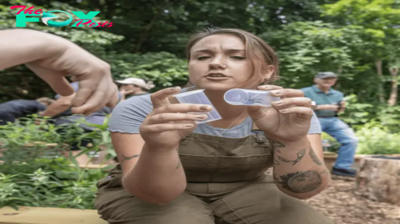Health
GriefSPEAK: Death Anniversaries. Bobby Nardolillo Jr, gone 2 years – Mari Nardolillo Dias
by Dr. Mari Nardolillo Dias, EdD, contributing writer
This week marks two years since my brother Bobby Nardolillo, Jr passed. When writing about his initial passing, I described my feelings as “Gravity changed, and the earth slipped off its axis.” Two years later, I still am reminded that something seems amiss in my world, yet now it takes me a second or two to name it. Bobby’s Gone.
In “The Grieving Brain”, Mary Frances O’Connor explains how the grieving brain differs from the non-grieving brain. PET scans show that in our grieving brains, the area responsible for emotions (fear) is on overdrive, yet the part of the brain that keeps these emotions in check is sorely inactive. This is the neurological explanation of why I felt the earth shifting. Mary Frances also posits another theory: that the brain learns and finds it very difficult to unlearn. Not impossible, but difficult.
As infants, we cry when our caretaker is not in view. We believe they are gone; however, after a few months that same infant knows that their mother is there and they just can’t see her. Yet if they cry, she will appear. As the child gets older, they use their visual mapping when thinking about mom. They picture her at home, or at work. This is a bonding process when we learn to trust and leads to Bowlby’s attachment theory.
Now, think about an adult child here on earth. In addition to visualizing them physically, the picture probably also includes their environment. Their surroundings. When a parent tells their adult child “I want to see your dorm room so when I speak with you, I can picture it”, that parent’s brain when thinking about their adult child creates a visual map that includes and completes the picture.
What happens when that individual is simply gone? Regardless of where you look, they are not to be found. This creates chaos in our visual mapping. They must be there. Or somewhere on Terra Ferma. But they are not. It takes our grieving brains a long time to modify our visual map to understand that this person is gone and can never be found. On one hand we come to grips with the fact that they have passed, but the virtual mapping in our brain continues to look for them. Until it doesn’t.
Take another example. It is the middle of the night and completely dark in your home. You attempt to go into the kitchen to get a drink of water but are concerned you may bump into the table on your way. You walk gingerly around the table, careful not to scrape a toe or bruise a hip. Until you notice the table is no longer there. Your visual map remembers the table. Now you are behaving as if it still exists. It does not.
It’s the same with grief. My visual map always has Bobby on location. Our attachment based on early and lifelong bonding is imprinted in my brain. I have not stopped looking for him. In signs and memories.
One of the most effective ways to work with our mindmap and faulty predictions is to create new life experiences. Ones that do not include the deceased. It will take some time, but your map will learn to create new memories, along with the bittersweet truth of final, permanent loss.
___
To read more articles by Dr. Dias, go here: https://rinewstoday.com/dr-mari-dias/
___

Dr. Mari Nardolillo Dias is a nationally board-certified counselor, holds a Fellow in Thanatology and is certified in both grief counseling and complicated grief. Dias is a Certified death doula, and has a Certificate in Psychological Autopsy.
She is Professor of Clinical Mental Health, Master of Science program, Johnson & Wales University. Dias is the director of GracePointe Grief Center, in North Kingstown, RI. For more information, go to: //gracepointegrief.com/
-

 Health5h ago
Health5h agoTeens Are Stuck on Their Screens. Here’s How to Protect Them
-

 Health11h ago
Health11h agoHow Pulmonary Rehab Can Help Improve Asthma Symptoms
-

 Health11h ago
Health11h ago10 Things to Say When Someone Asks Why You’re Still Single
-

 Health1d ago
Health1d agoThe Surprising Benefits of Talking Out Loud to Yourself
-

 Health1d ago
Health1d agoDoctor’s bills often come with sticker shock for patients − but health insurance could be reinvented to provide costs upfront
-

 Health1d ago
Health1d agoHow Colorado is trying to make the High Line Canal a place for everyone — not just the wealthy
-

 Health2d ago
Health2d agoWhat an HPV Diagnosis Really Means
-

 Health2d ago
Health2d agoThere’s an E. Coli Outbreak in Organic Carrots



























